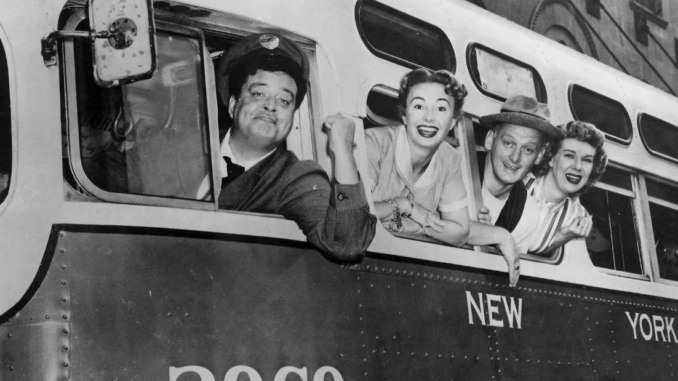
Even decades after its original run, The Honeymooners still stands out in television history—not just as an early sitcom, but as a defining model whose influence resonates in shows made many years later. What makes it so iconic? Here’s why both longtime fans and newer viewers continue to discover and celebrate this classic.
Roots in Relatable Struggle
At its heart, The Honeymooners wasn’t about grand adventures or glamorous settings—it was about everyday people dealing with everyday problems. Ralph Kramden, a bus driver with big dreams and a larger mouth, is often frustrated by work, bills, or rivalry. Alice, his sharp-witted wife, grounds him with both love and realism. These struggles—financial stress, unmet expectations, spousal tension—are timeless. They remind audiences that hardship and humor often travel together.
Character Dynamics That Refuse to Fade
The show’s characters are exaggerated, but they feel real. Ralph’s bluster and threats are so over the top they become comedic, yet there’s vulnerability underneath. Alice is witty and patient, yet she’s not a victim; she shares in the blame, the banter, and the laughter. Supporting characters like Norton or recurring ones who appear in multiple roles amplify the everyday chaos. The blend of ego, frustration, affection, and pride mirrors what many people recognize in families, friendships, and marriage.
Narrative Simplicity, Comedic Precision
Much of The Honeymooners success comes from its structure. Episodes set up a conflict—often something domestic and mundane—escalate quickly through carefully paced dialogue and timing, then resolve (if imperfectly) in a way that leaves viewers both satisfied and amused. There’s no over-complicated plot needed. The show’s rhythm teaches comedy: build tension, let emotion peak, then diffuse with wit or reconcile with character. Modern sitcoms often borrow this pattern, even when their settings and delivery are vastly different.
Cultural Echoes: Then and Now
When TIL posts mention The Honeymooners as “one of the most iconic,” they’re tapping into more than nostalgia. They’re recognizing that countless shows that followed—whether in America or elsewhere—owe something to its DNA. The bickering husband, the strong wife, the foil neighbor—these are archetypes visible in Roseanne, All in the Family, Everybody Loves Raymond, etc. Even when settings shift (suburbs, cities, modern apartments) or delivery style evolves (single-camera, streaming, edgier humor), the core dynamic remains.
Why New Audiences Keep Discovering It
For many, watching The Honeymooners now is like opening a time capsule: black-and-white television, live audience reactions, period-specific details. But it isn’t just antique charm. People also find surprise in how raw and honest its humor can be, especially in comparison with more polished, CGI-heavy modern sitcoms. The authenticity, the edge of emotional risk, the willingness to let characters be loud, flawed, even self-defeating—those are refreshing for viewers tired of perfection.
The Legacy and Lessons
The Honeymooners teaches that strong character work and conflict rooted in real emotion can outlast fashion, technology, and changing social norms. It reminds writers, actors, and creators that many elements of storytelling—pride, love, frustration, dreams—are universal and timeless. And for audiences, its continued relevance confirms that while styles shift, people’s core experiences stay much the same.
